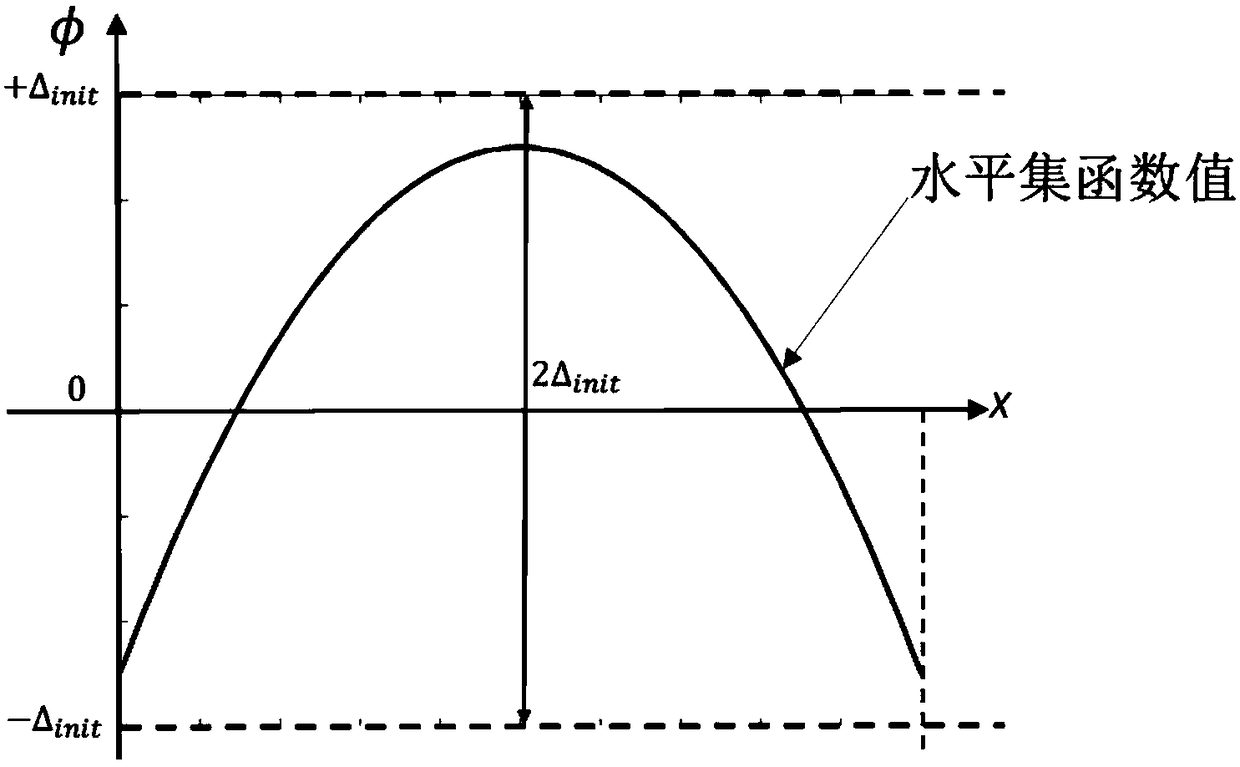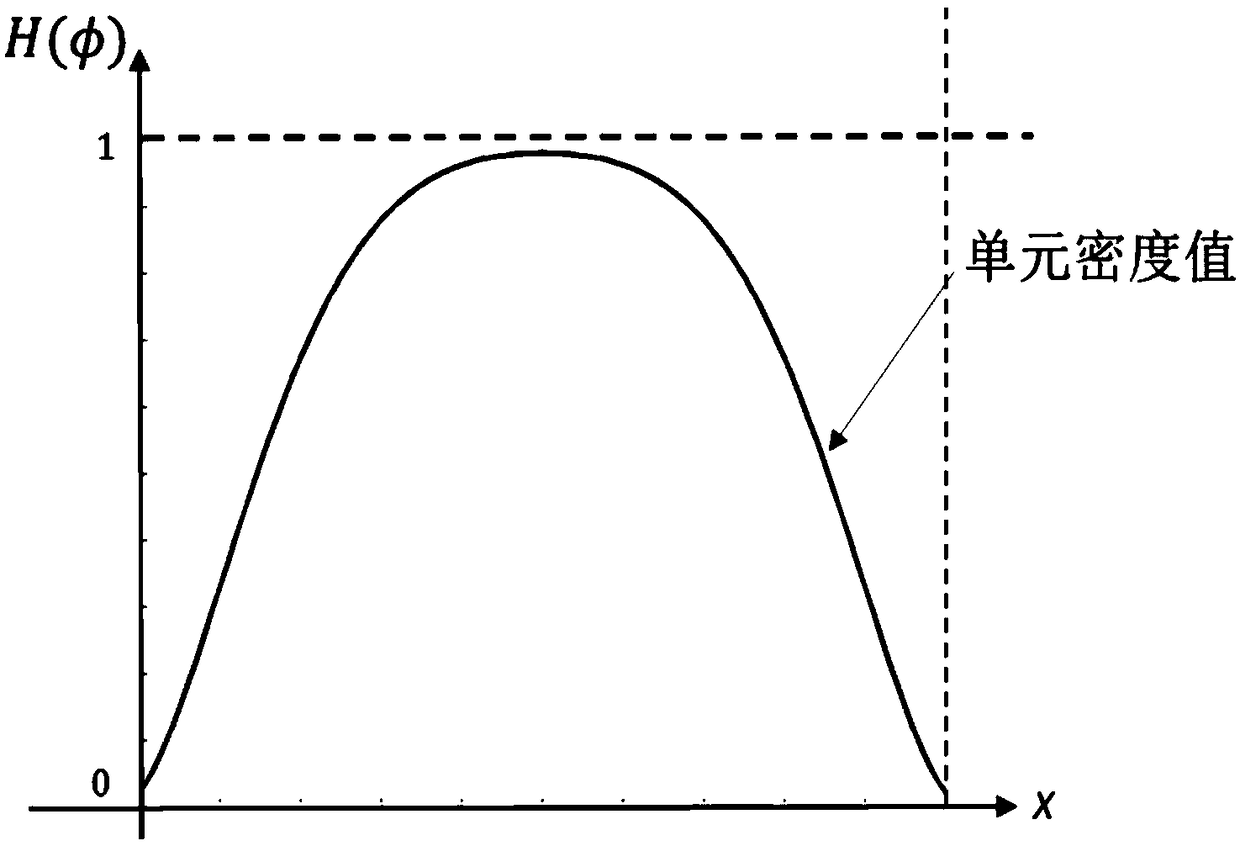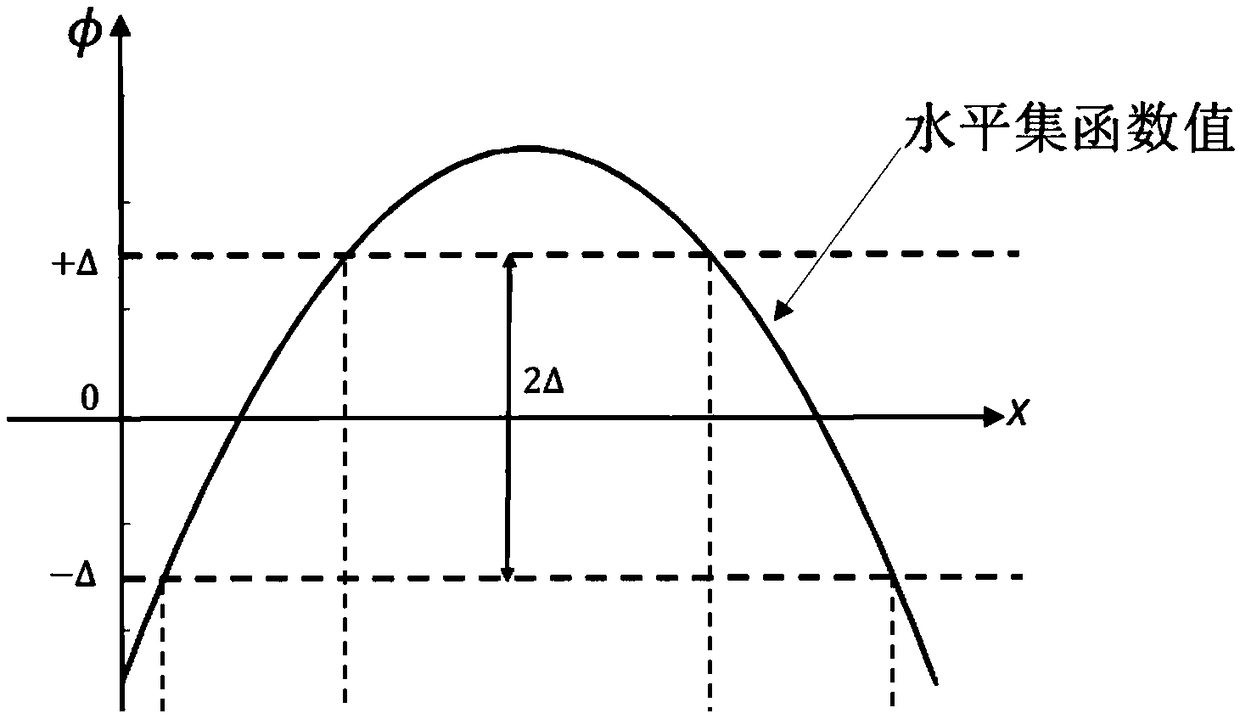Structure topology optimization method
A topology optimization, finite element technology, applied in design optimization/simulation, special data processing applications, instruments, etc., can solve problems such as mismatching penalty effects, inability to eliminate intermediate density cells, and discontinuous topology evolution process.
- Summary
- Abstract
- Description
- Claims
- Application Information
AI Technical Summary
Problems solved by technology
Method used
Image
Examples
Embodiment 1
[0043] like Figure 7 As shown, a method for structural topology optimization in this embodiment includes the following steps:
[0044] S1. In this embodiment, the Figure 8 Take the two-dimensional plane stress structure shown as an example to illustrate the structural topology optimization. In this structure, the left end of the initial rectangular design domain is a fixed constraint, with a length of 0.8m, a width of 0.4m, and a thickness of 0.01m. The elastic modulus of the solid material is 2.1×10 11 Pa, the modulus of elasticity of the blank material is 2.1×10 2 pa, Poisson's ratio is 0.3, and the structure is subjected to a vertical load of 100N at the midpoint of the right end. The optimization goal is to minimize the structural strain energy, and the volume equation constraint is imposed, and the volume fraction is taken as 50%.
[0045] S2, such as Figure 9-10 As shown, a four-node plane stress element is used, and through finite element modeling, the design dom...
PUM
 Login to View More
Login to View More Abstract
Description
Claims
Application Information
 Login to View More
Login to View More - R&D
- Intellectual Property
- Life Sciences
- Materials
- Tech Scout
- Unparalleled Data Quality
- Higher Quality Content
- 60% Fewer Hallucinations
Browse by: Latest US Patents, China's latest patents, Technical Efficacy Thesaurus, Application Domain, Technology Topic, Popular Technical Reports.
© 2025 PatSnap. All rights reserved.Legal|Privacy policy|Modern Slavery Act Transparency Statement|Sitemap|About US| Contact US: help@patsnap.com



